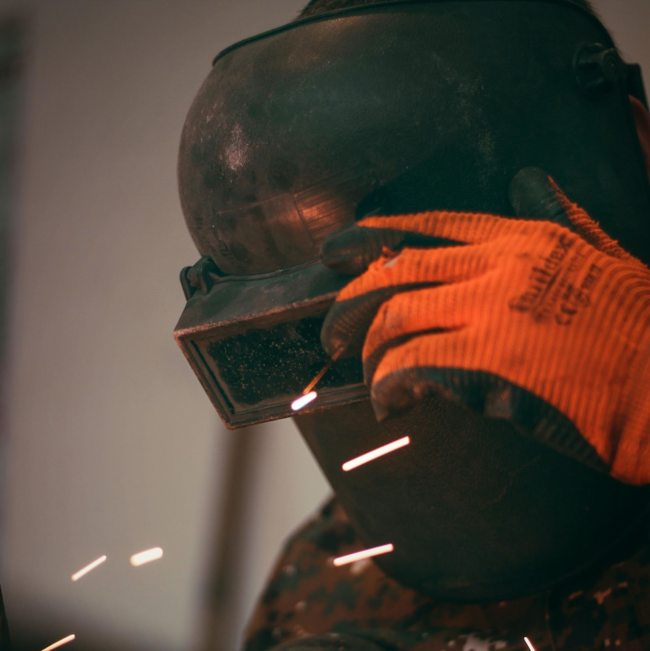Blog
4 Key Factors To Consider When Choosing a Welding Helmet

A helmet is probably the most important piece of equipment for a welder when it comes to safety. During the welding process, the welder's eyes, face and neck are exposed to intense ultraviolet and infrared radiation as well as sparks and intense heat. Thus, a welding helmet needs to be worn at any time during the welding process. In this blog, we discuss aspects that need to be taken into account when choosing a welding helmet.
Consider These Aspects When Choosing a Welding Helmet
Look for proper certification
All welding helmets sold on the market must meet safety standards, regardless of their cost. These safety standards are ANSI Z87.1 for the United States and CAN/CSA Z94.3 for Canada and are applied to equipment used to protect eyes and face from hazards such as flying objects and particles, splashing liquids, molten metal, and ultraviolet, visible, and infrared radiations.
Choose between helmets with fixed and variable lens shade
Choosing between the fixed and auto-darkening lens helmets has several aspects to consider. The feature that makes these two helmets different is the lens. The traditional welding helmet has a shade #10 lens which requires a welder to manually flip the mask down before striking the arc and flip it up after the weld is finished in order to examine the joint. These repetitive movements are time-consuming and can put an extra physical load on the welder's neck. In addition, the weld quality may also be affected.
Unlike the fixed lens, the auto-darkening lens has continuously variable controls which adjust the shade from light to dark and back. The light state allows the welder to see clearly through the lens when the helmet is in a down position and the dark state switches on when the welder strikes the arc. This feature allows the welder to keep the hood down and see clearly even when he is just preparing for welding. Helmets with auto-darkening lenses are also easier to maneuver when working in tight spaces. However, unlike fixed lens shade helmets, they also require a power source (battery or solar power) to charge which is something that needs to be accounted for.
Helmet weight is important
The helmet weight is important especially if you plan to engage in continuous welding. Older model helmets are generally heavier and may put an extra strain on your neck making you feel more fatigue at the end of the workday. The optimal helmet weight is between 18 to 21 ounces which is mainly a feature presented in newer model helmets.
Helmet fit
It is recommended to try the helmet on to ensure you feel comfortable while wearing it. Pay attention to things like the helmet distance from your face when in the down position and see if you can control the endpoint where the helmet stops when lowered down before welding. In addition, check if the helmet locks into a detent when lifted in the upward position. All these details play a role in ensuring your comfort, and if not carefully considered, they can only increase neck strain and overall fatigue at the end of the workday.
Welders working on a construction site may be required to wear a hard hat along with a welding mask. If you fall into this category of welders, look for models with an adapter that allows you to wear both the hard hat and welding helmet to ensure full compliance with safety regulations.
As you can see, protective features and comfort considerations are the two aspects to be accounted for when choosing a welding helmet. Taking the time to choose the right helmet is important. Not only will it ensure your safety and comfort while welding, but will also result in a better quality weld and overall enhanced productivity.
At Lock8’s premium welding supply store, we offer a variety of welding helmets as well as helmet accessories such as hard hat adapters, head gear, protective gear, sweatbands, lens covers and more to meet any welding project needs. Get in touch with us today to see what other equipment solutions for welders and contractors we offer.



